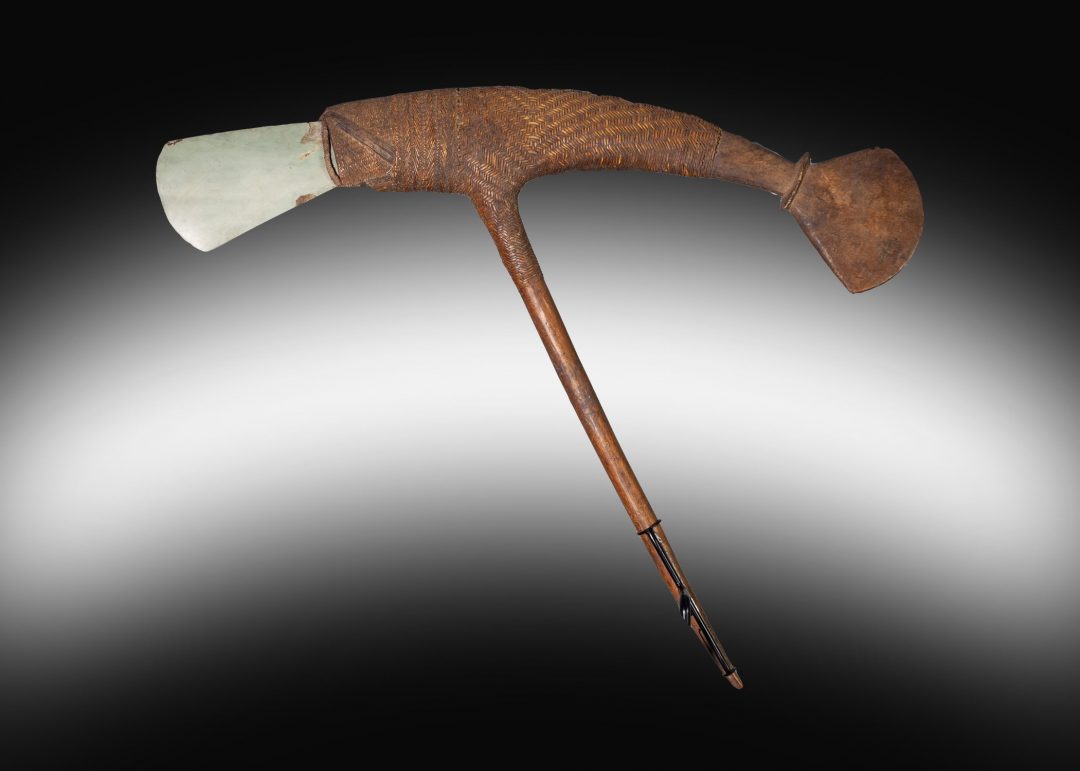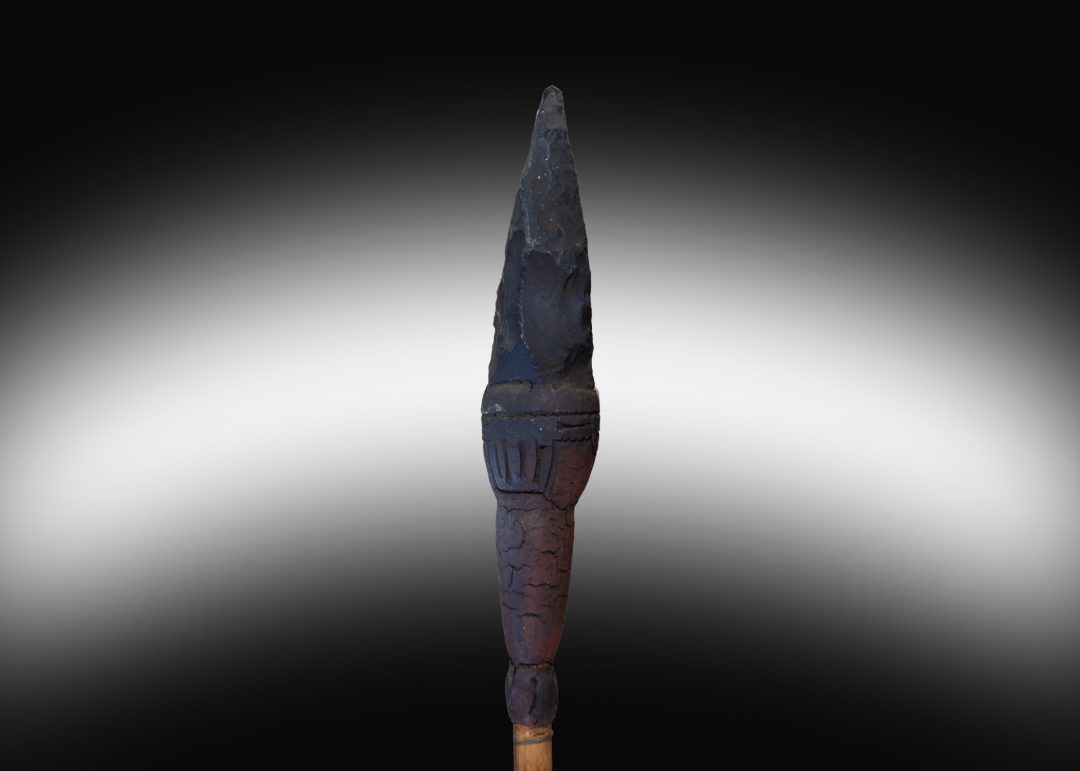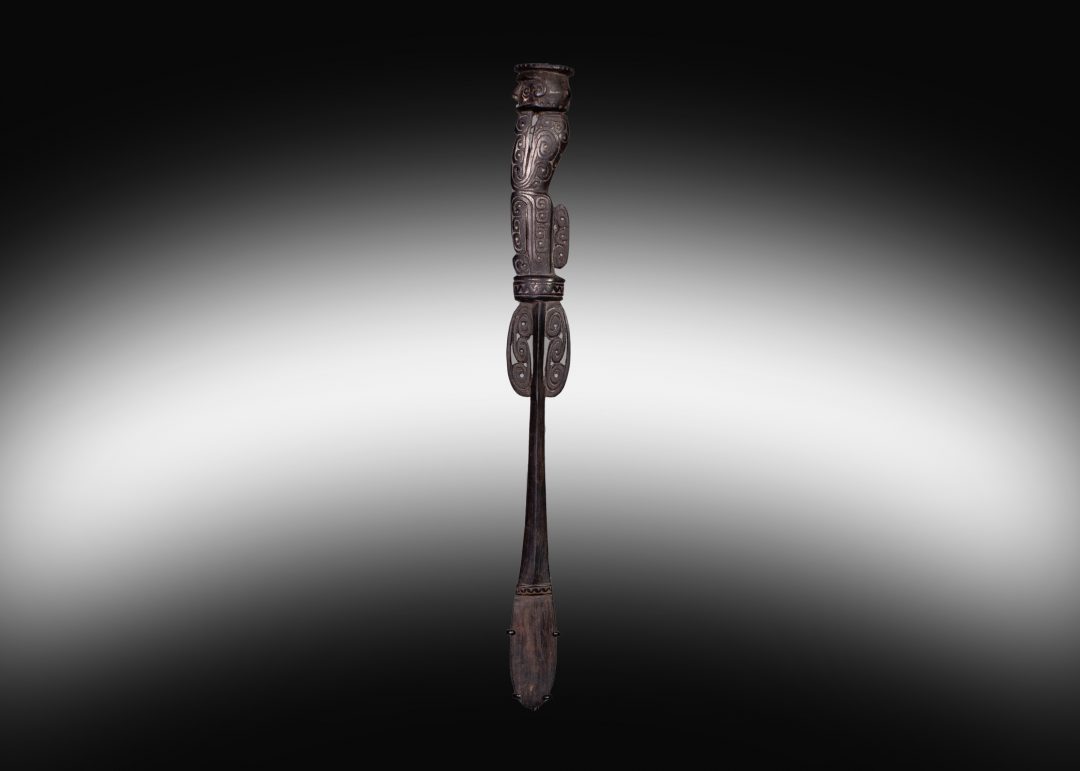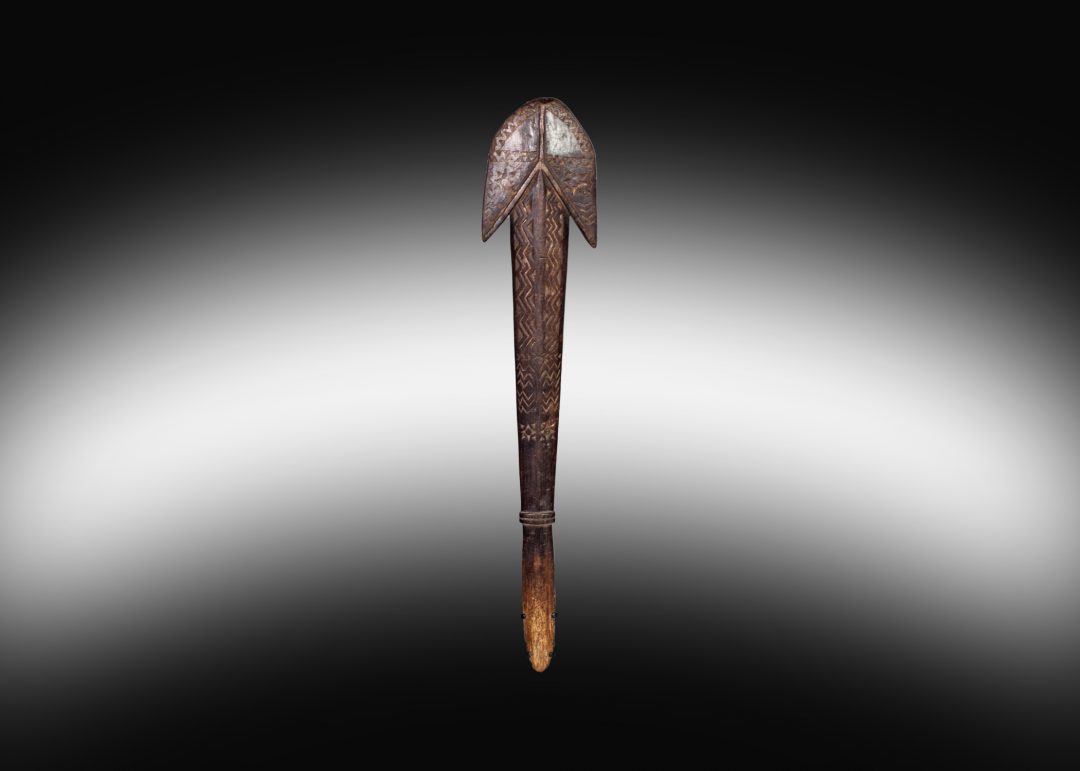Rai Coast Lime Container with Spatula
-
TitleRai Coast Lime Container with Spatula
-
LocationRai Coast, Morobe Province,
-
DateMid 20th Century
-
PriceSOLD
This lime container and spatula is part of the betel nut chewing paraphernalia found in the Morobe Province, Papua New Guinea. A mortar and pestle are used to crush the required ingredients – betel nuts, mustard plants, and quicklime – that make the chewing quid. The lime is stored in this gourd that has been decorated with ground shell discs and topped with a large conus shell ring. The spatula, a cassowary bone, is decorated with nassa shells woven into a natural fibre headpiece. The container is used ceremonially in dance and by senior men in daily use.
In Papua New Guinea, betel nut is mixed with the leaves or inflorescences of the betel pepper plant (Piper betle, referred to in Papua New Guinea as “mustard”) and mineral lime obtained from burned coral. When properly prepared, the admixture acquires a bright red hue that colors the mouths of chewers. Both the color and the fragrant scent imparted by the betel nut quid have positive connotations and are considered to be pleasant to the senses in New Guinea , where chewing betel nut is very common. People start chewing as soon as they have teeth and never stop, even in old age, when they can no longer crush the nuts in their mouths and use mortars to do so.
Chewing betel nut is a social activity, carried out when two or more people sit down to talk or when doing collective work. It encourages conversations and momentarily excites the mind and the body, as well as perfuming the breath and stimulating the production of saliva. Its astringent effect also helps control pangs of hunger. The bright red color of the betel mix has positive aesthetic and symbolic connotations. A red-stained mouth is a sign of vigor and beauty, and elder people who have red-black teeth due to constant chewing are said to have “burned” mouths, a symbol of wisdom that usually commands respect.
This lime container and spatula is part of the betel nut chewing paraphernalia found in the Morobe Province, Papua New Guinea. A mortar and pestle are used to crush the required ingredients – betel nuts, mustard plants, and quicklime – that make the chewing quid. The lime is stored in this gourd that has been decorated with ground shell discs and topped with a large conus shell ring. The spatula, a cassowary bone, is decorated with nassa shells woven into a natural fibre headpiece. The container is used ceremonially in dance and by senior men in daily use.
In Papua New Guinea, betel nut is mixed with the leaves or inflorescences of the betel pepper plant (Piper betle, referred to in Papua New Guinea as “mustard”) and mineral lime obtained from burned coral. When properly prepared, the admixture acquires a bright red hue that colors the mouths of chewers. Both the color and the fragrant scent imparted by the betel nut quid have positive connotations and are considered to be pleasant to the senses in New Guinea , where chewing betel nut is very common. People start chewing as soon as they have teeth and never stop, even in old age, when they can no longer crush the nuts in their mouths and use mortars to do so.
Chewing betel nut is a social activity, carried out when two or more people sit down to talk or when doing collective work. It encourages conversations and momentarily excites the mind and the body, as well as perfuming the breath and stimulating the production of saliva. Its astringent effect also helps control pangs of hunger. The bright red color of the betel mix has positive aesthetic and symbolic connotations. A red-stained mouth is a sign of vigor and beauty, and elder people who have red-black teeth due to constant chewing are said to have “burned” mouths, a symbol of wisdom that usually commands respect.












